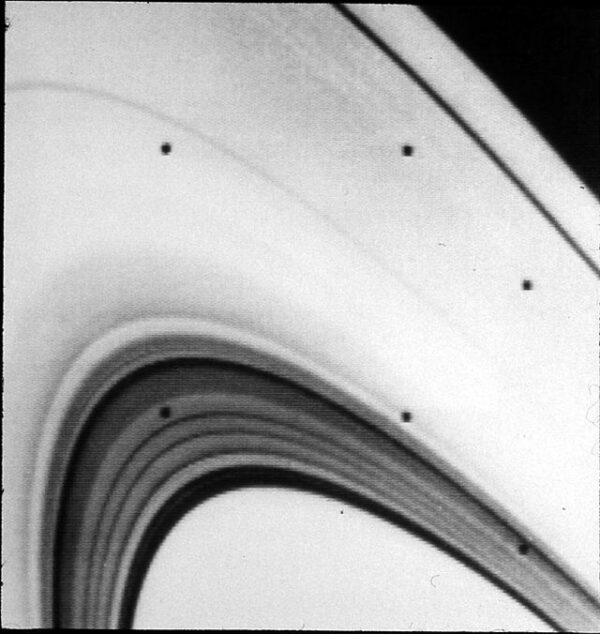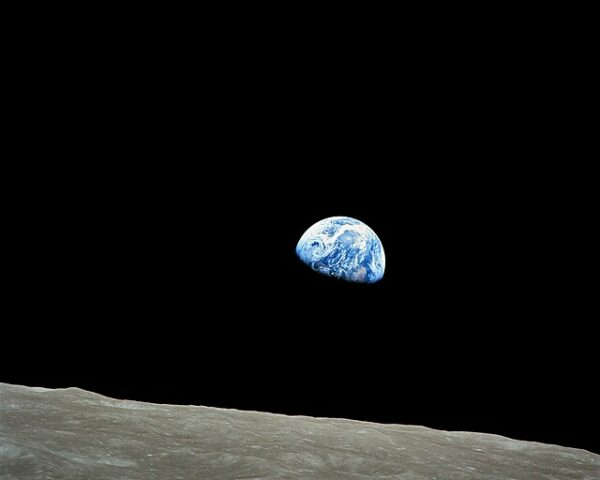Voyager 1’s close encounter with Saturn on November 12, 1980, marked a decisive turning point in humanity’s study of the outer solar system—a moment when a 1,800-pound machine, flung from Earth three years earlier, delivered images and measurements that fundamentally redefined scientific understanding of the ringed giant. Launched in September 1977 as part of NASA’s ambitious Grand Tour of the outer planets, Voyager 1 approached Saturn at a range of roughly 77,000 miles, executing a meticulously planned flyby that brought its cameras, spectrometers, and magnetometers to bear on a world that, until then, had been known to astronomers largely through telescopic hints and analog photographs. The spacecraft’s primary charge was simple in principle—map Saturn’s atmosphere, survey its moons, and capture the first detailed images of its ring system—but the results far exceeded those expectations.
The approach itself was a high-stakes navigation exercise. Saturn’s gravitational field, its intricate system of rings, and the presence of dozens of moons created hazards that mission planners had studied for years. By November 1980, however, confidence in Voyager 1’s reliability was high. Its earlier passage by Jupiter had already demonstrated the spacecraft’s ability to withstand intense radiation, execute precision maneuvers, and return scientifically rich data. As Voyager 1 crossed the plane of Saturn’s rings, its narrow-angle camera began recording images that revealed structures never glimpsed from Earth: discrete ringlets, braided strands, and unexpected density waves propagating through the system like ripples on a pond. What had once appeared to be a set of broad, uniform rings now resolved into hundreds—perhaps thousands—of finely separated components governed by complex gravitational interactions.
The images immediately challenged long-held assumptions. Telescopes had shown divisions—the Cassini Division, most famously—but Voyager 1 revealed that even these gaps were not empty. Dust, icy particles, and faint arcs occupied spaces that astronomers had interpreted as voids. More surprising still was the discovery of “shepherd moons,” tiny bodies whose gravitational pull sculpted the rings’ razor-sharp edges. Prometheus and Pandora, orbiting near the F ring, became emblematic of this phenomenon. Their presence confirmed theoretical predictions that moons could regulate ring structure through orbital resonances, although the degree of complexity on display exceeded anything scientists had anticipated.
Saturn itself proved equally revelatory. Voyager 1 captured the planet’s dynamic upper atmosphere—bands, jet streams, and storm systems swirling with ammonia crystals in winds exceeding 1,000 miles per hour. The spacecraft’s infrared spectrometer identified heat patterns and compositional variations, offering the clearest evidence yet that Saturn’s weather was governed by internal heat rising from deep within the planet. Meanwhile, the magnetometer detected a powerful magnetic field surprisingly well-aligned with Saturn’s rotational axis, defying theories that assumed such precision was improbable for a gas giant.
Among the most significant scientific outcomes of the flyby involved Saturn’s moons. Voyager 1’s close examination of Titan—one of the mission’s principal objectives—found an atmosphere thicker than Earth’s and composed primarily of nitrogen with traces of methane, ethane, and complex hydrocarbons. The haze was so dense that the moon’s surface remained obscured, but the implications were profound: Titan possessed the basic chemical ingredients for prebiotic processes, making it one of the most promising targets for future exploration. Other moons also astonished investigators: Mimas displayed the massive Herschel Crater; Tethys and Dione revealed fault lines and impact scars; and Enceladus, though not yet known for its geysers, showed subtle brightness variations that hinted at unusual surface processes.
By the time Voyager 1 completed its encounter and began its trajectory out of the ecliptic plane, the mission had exceeded every measure of scientific success. Saturn was no longer a distant gas giant wrapped in mystery but a complex system shaped by gravitational choreography, dynamic weather, and a menagerie of moons with diverse geological histories. The images of the rings—those delicate arcs of ice and dust—became icons of planetary science, transforming a symbol long admired through telescopes into a detailed, evolving laboratory of celestial mechanics. Today, Voyager 1 is the first manmade object to leave the solar system.






